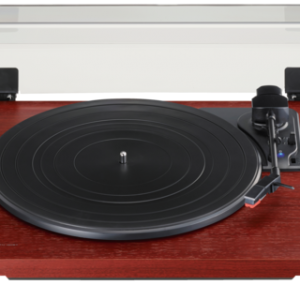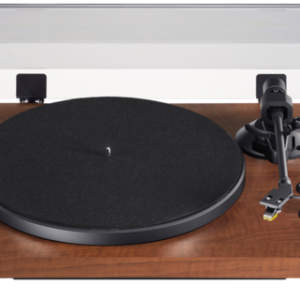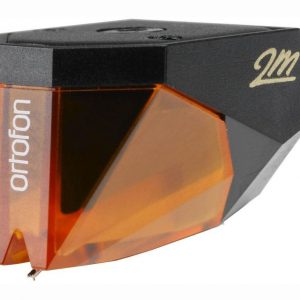Input Receiver, SPDIF: AK4113, USB: Schiit Unison™ USB, based on Microchip PIC32 microprocessor
Power supply: 24VA transformer, 8 stages of regulation, including separate supplies for critical digital and analog sections
Upgradability: Autonomy™ architecture with externally replaceable DAC/Analog Card and USB Input Card, plus MicroSD card slot for firmware updates
Remote control: included, controls source selection, phase invert, and mute.
Now hold on a moment there, bub! You said the original Bifrost was upgradable!
Yes, it was. And it is. For example, and you can still upgrade, say, an original Bifrost Uber to a Bifrost Multibit, and when Unison USB is available for all the current DACs, you’ll be able to add that too—
NO I THOUGHT IT WAS UPGRADABLE FOREVER!
Well, the original Bifrost was around for 8 years. That is pretty much about a millennium in terms of DAC years, or at least about 286 years in dog years. Seriously, look around and tell us how long affordable DACs last before they’re replaced with all-new models—with no option to upgrade. And again, the original Bifrost remains upgradable, and supported. Bifrost 2 doesn’t change that.
Well then why a Bifrost 2? What was wrong with the old one?
Why an iPhone 11? Why a Galaxy 10? Because times change, and our capabilities change with them. Bifrost 2 allows us to give you an all-new platform that is easy to update, when and if the time comes, without having to send it back to us for upgrades.
So how is the Bifrost 2 different than Bifrost?
It’s entirely different:
- Balanced output: Bifrost 2 now has balanced output, as well as single-ended output, to simplify its integration with your system
- Remote control: Bifrost 2 now has a remote control for input select, mute, and phase invert.
- Better DACs: Bifrost 2 now uses the 18-bit Analog Devices AD5781ARUZ D/A converter, rather than the 16-bit AD5547.
- Better USB: Bifrost 2 introduces our Unison USB—a complete elevation of the USB input.
- Easier updates: Bifrost 2’s Autonomy architecture means that both cards are replaceable from the back of the product for easy hardware updates, and firmware changes are handled with an external MicroSD card slot.
- Improved power supply: Bifrost 2’s transformer is larger, and the power supply has more stages of local regulation, for insanely great low-noise performance.
Wait a sec, remote control?
Yes. It controls input select, mute, and phase inversion.
But the remote doesn’t control volume? Why didn’t you give us an option for remote volume?
We did. It’s an additional $299. It’s called “Saga S.” There’s even a tube remote volume option for $349, called “Saga+.”
I see you named your True Multibit architecture. What, was there a sale on trademarks or something?
No, we named it True Multibit™ because there’s a lot of confusion over what is really multibit and what isn’t. Some companies refer to multilevel delta-sigma D/A converters (like the AK4490 used in the 125 euro Modi 3 and Fulla) as “Multibit” DACs. While kinda-sorta-maybe technically correct, this is pretty misleading. 2 to 5 bits of actual resolution plus massive amounts of noise shaping is not true multibit. Hence, True Multibit. We use True Multibit to denote DACs that have 16-20 actual bits, rather than multilevel noise-shaping delta-sigma DACs, coupled with our unique combination of time- and frequency-domain optimized digital filter, based on math first proposed by Western Electric in 1917, and developed into usable algorithms by a team that included a professor emeritus of math and a Rand Corp mathematician. It’s unlike any other digital filter today, and we believe it provides the closest thing to a true interpolation, while retaining the original samples as closely as possible.
Well, I like delta-sigma DACs better.
Cool. You should go buy one. We make a couple of them. They’re also in your phone and Bluetooth speakers.
No, seriously, I don’t believe this True Multibit stuff. 18 bits? What about 24 bit music?
Well, leaving aside the fact that there probably ain’t nowhere near 24 usable bits in any recorded music, no matter the audiophile cred, if you’re looking for resolution below the 18-bit level, take a look at our measurements, showing Bifrost 2 clearly resolving a -144dB signal. That’s -24 bits. Boom.
But…that’s unpossible! How do you do that?
How does a 2- to 5-bit delta-sigma DAC do the same thing? It’s magic. We put tiny pixies in each DSP chip. Either that, or we know a thing or two about DSP and dithering.
Let’s move on. What’s all this hoo-ha about Unison USB?
Unison USB is our own proprietary USB input, not based on C-Media or XMOS or any other off-the-shelf USB receiver out there. Instead, we spent a couple of person-years developing our own code for a standard Microchip PIC32 microprocessor, which allowed us to create a higher-performing USB input than anything else on the market.
But, USB inputs, like, kinda suck.
Not Unison USB. Even Mike Moffat, the famous “friends don’t let friends use USB” guy, prefers Unison to SPDIF.
Prefers?
Yes.
Mike Moffat prefers USB input?
Yes.
Wait a second, my head just exploded.
We know how you feel.
So why is Unison USB so special?
Unison USB is special because it was developed for a single purpose: to provide the highest performance input for PCM digital, period. It doesn’t have ten thousand un-used functions, nor is it trying to optimize for five different unicorn formats that will probably be gone tomorrow. It also uses very high-quality local clocks and offers complete electrostatic and electromagnetic isolation from the source. It also provides lower power draw and complete UAC2 compatibility.
So what platforms does your Unison USB input support?
Actually, the question should be “What platforms support your Unison USB input?” since our Unison USB input is 100% UAC2 compliant (that is, USB Audio Class 2, the accepted standard for USB audio transmission.) So, here you go:
- Linux. As in, most popular streamers, from the Sonore MicroRendu to the Salk Streamer. Note “most.” Also most Linux distros that support UAC2 natively will be plug and play. Please note that we cannot provide detailed technical support for Linux.
- Windows 10. Yes, Windows 10 only. We don’t provide UAC2 drivers for earlier versions of Windows, sorry. Yes, it is time to step into the present (not the future, Windows 10 has been out for a couple of years now.) Yes, it is time to upgrade. Yes, it’s worth it. Windows 10 is actually a very nice platform.
- Mac OSX. From 10.10 on up, Macs are good to go. Sometimes you’ll run into power management problems that will require you to turn off App Nap. Got an older version of MacOS? See the comments on Windows above. Time to upgrade. The software is free.
- iOS. From iOS7 on up, iOS devices work with USB Camera Connection Kit, Lightning to USB Camera Adapter, a Lightning to USB3 Camera Adapter, or directly with the new USB-C models.
- Android. Most Android devices that shipped with Android M or above will work using a USB OTG cable. Some may require separate player software, like USB Audio Player Pro.
And Autonomy Architecture? You’re getting a lot of TMs here.
Yeah. We know. But again, we really needed to name this. Because now, no matter the update, Bifrost 2 never has to leave your hands. New firmware? Just plug in an external MicroSD card. New analog card? Just slide it in. New USB card? Same. Again, we’re not planning on a ton of updates, but when there are updates, you won’t miss your DAC anymore.
Sounds like you’ve been listening.
We try. The biggest problem with the original Bifrost’s platform is that it frequently had to come back to us for updates. We wanted to eliminate this problem—entirely—with the new version.
Are you saying the new Bifrost 2 is a desktop Yggdrasil?
In some ways, it actually measures better than an Yggdrasil…so if you’re judging based just on measurements, then it’s probably better. But measurements don’t tell the whole story. If you want great measurements, there’s Modi 3—that’ll save you half a thousand dollars on this guy. But now that you mention it, Bifrost 2 is pretty much a desktop Yggy—it has balanced outputs, it uses DACs from the same family, it has a similar digital filter. And it even has remote control. No, wait. That’s better than Yggdrasil.
How the heck can you do something that’s completely modular, and has all this new tech inside it, for such an insanely low price…and make it in the USA, with a 5-year warranty?
Because, well, we are what we are. We provide fun, affordable audio products. And unlike some other companies, we don’t think “affordable,” means “the price tag is four figures, and it starts with a 5.” In short, we design products that are efficient to make and easy to support, and sell them to you directly, without multi-level mark-ups. We’re not interested in “race to the top” price wars, because that doesn’t bring new people into high end audio. Nor are we worried about some who might think our products are less capable just because they’re less expensive. Maybe it would be better to ask the other companies how they can charge so much for their products?


























